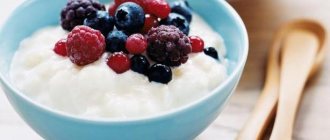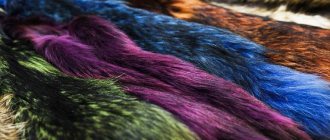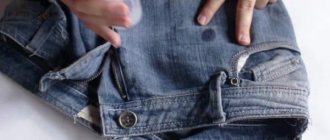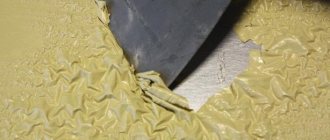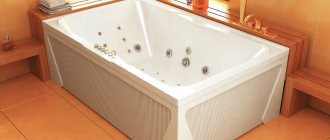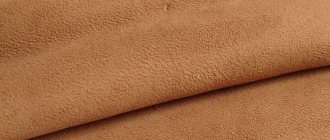Coloring a canvas with numbers printed on it brings pleasure to adults and children; it allows people of different ages to feel like artists, creating beautiful scenes with their own hands. Beginners often face the problem when paints for painting by numbers have dried out; what to do in such a situation, the advice of experienced masters will help.
Drawing by numbers brings pleasure to adults and children and makes them feel like an artist.
Composition of acrylic-based paints
The manufacturer offers acrylic paints for painting by numbers. They are included in the kit and are bottled in tubes or small jars. Each color has its own number.
Acrylic dye is a material that has the following properties:
- quick drying;
- no unpleasant odor;
- environmental friendliness and safety;
- increased resistance to external influences, light fastness, so the enamel does not fade over time;
- high combinatoriality, as a result of which when mixing basic colors you can get the desired shade;
- simplicity and ease of application with a brush.
The basis is acrylic - a polymer of acrylic resin. It increases the adhesion of the components, promotes the connection of the enamel layer with the surface and the formation of a film that increases strength.
Artistic acrylic paints also include:
- organic and inorganic pigments responsible for color and brightness;
- water or solvent;
- emulsifiers;
- filler;
- stabilizers;
- surfactants.
Enamels can be divided according to the type of solvent:
- Water-dispersed. Suitable for both painting and interior repair and finishing work. They are used for painting canvases and landscape paper, for walls and ceilings in living spaces. Non-toxic and safe.
- Made from substances of organic origin. Used for external processing, such as painting metal surfaces. They contain a large number of film formers. During the drying process, a smooth, glossy coating is obtained that protects the metal from corrosion, damage, and exposure to ultraviolet radiation.
What is the difference between solvent and thinner
Before choosing one of these tools to solve the problem, it is worth understanding their differences and features. The solvent is a volatile liquid of organic origin, such as alcohol or ether. It can also be a mixture of these liquids. Used to dissolve film-forming substances and give paints the desired consistency.
Thinner also refers to volatile liquids of an organic nature, used to reduce the viscosity of the paint composition, thereby achieving a consistency suitable for good application to the surface.
The liquids are quite similar, so they are often confused. Solvents are often used in the manufacture of paint and are introduced at the production stage. The basis of the paint and varnish material is a solid or viscous substance. Therefore, the solvent allows you to achieve a form of composition that is convenient for work. When this substance is added, the paint will remain in a liquid state and will not dry until the surface is covered with it. Due to the ability to influence the structure of the composition, the solvent is a rather aggressive product.
Thinners are not so aggressive. Their composition does not dissolve the resin, they only dilute it to the desired degree of viscosity. The key task is dilution. That is, a change in viscosity, but not structure, which is why they are more gentle.
Solvents are often used in the manufacture of paint and are introduced at the production stage.
What is better to use, is it possible with water?
When the composition has dried, the question arises of how to dilute the acrylic paints. Due to the fact that they contain quite a lot of water, it can also be used to change the consistency for the better.
If the material is dry, water will not help. When added to a jar, a suspension is formed consisting of pigments and acrylic particles in a liquid. The material will lose strength and coils of composition will appear on the surface.
Acrylic can be diluted with water. But, only strictly observing certain proportions and doing it once. You won't be able to use this method all the time.
Acrylic can be diluted with water. But, only strictly observing certain proportions and doing it once.
When selecting the appropriate dilution mixture, it is important to consider many factors, including:
- Temperature. The room temperature should be in the range from 15°C to 20°C;
- Compound. You should know the degree of purification of the substance with which you plan to dilute it. No impurities are allowed. In the case of water, it must be settled or distilled;
- Proportions. If you make mistakes, then the consistency will be too thick or liquid. The quality of the material will be damaged.
You should know the degree of purification of the substance with which you plan to dilute it.
In addition to water, thinners and solvents can be used. There are several main groups that are used for coatings:
- Artistic. They are used for finishing work in the interior and in painting.
- Specialized. Issued for specific areas and take into account the characteristics of these sectors.
- Universal. Can be used for any acrylic paint, regardless of its application.
Solutions are also divided according to the degree of drying:
- Slow. Can be used in high temperature conditions. Allows you to slow down the drying of the composition.
- Average. Used at temperatures from 15°C to 25°C.
- Fast. Can be used at low temperatures, down to -15°C.
The latter option is suitable for paints used for painting facades.
Universal thinners can be used for any acrylic paint, regardless of its area of application.
When choosing what exactly to dilute the composition with, you should rely on the following recommendations:
- When working indoors and painting walls and ceilings, you should use water as a thinner;
- For working with furniture or wood, thinning agents are suitable to improve the interaction between paint and wood;
- A solvent is suitable for metal.
It is worth taking into account the surface on which the composition is applied and the desired effect.
When working with furniture or wood, thinning agents are suitable to improve the interaction between paint and wood.
Types of paint thinners
Acrylic dye is a thick mass that must be constantly monitored: diluted before applying to the surface in order to obtain an even finishing layer.
If the enamel is dry, you can try to soften it.
To obtain the desired consistency, beginning artists need to know how to dilute acrylic paints for painting.
Thinners are used to reduce viscosity and restore original thickness. They do not affect the properties of the composition, they only change the saturation and texture.
Solvents are more aggressive. When they come into contact with acrylic, they liquefy it, entering into a chemical reaction, allowing you to quickly remove dried paint from any surface. The main disadvantage is the deterioration of the quality of the dye if used incorrectly.
Ordinary water
The main substance that can revive a coloring material is water. It must be clean and free of foreign impurities. For dilution, it is better to take bottled, filtered or settled liquid. It dilutes acrylic without changing its properties. As a result of applying the resulting material, the layer becomes durable, even, only the brightness and tone saturation varies. If you overdo it and add a lot of water, the enamel will be translucent, watery, and may change color.
You can revive the coloring material with water.
Specialized solvents
There are a large number of solvents from domestic and foreign manufacturers on the market. They are capable of:
- change the structure of the paint;
- improve the quality of coverage;
- influence drying speed;
- give the surface a matte or glossy finish.
The properties can be found on the label.
The products are used only in fresh form. It must be stored in an upright position in a well-ventilated area in compliance with fire safety rules.
Suitable solvents for artistic coloring are “Sonnet”, “Gamma”, “Decola”, “Art-Acrylic”.
Paint thinners
Depending on the composition, dried enamel can be reanimated:
- gasoline, solvent and similar liquid substances;
- White Spirit;
- alcohol;
- kerosene;
- turpentine.
Why is a solvent needed?
Before moving on to the process of thinning acrylic, it is necessary to first consider the basics of the released paint, their nature and additional nuances. Any builder or artist can tell you the importance of certain solvents, such as mineral spirits, which have virtually no pungent odor. It’s worth starting with the nature and characteristics of acrylic paint:
- Acrylic is a water-soluble paint. When added to a liquid, it begins to slowly dissolve and, as a result, becomes less viscous. In comparison, oil paints do not dissolve in water, so mixing them with water to dilute the density will not work.
- Acrylic paints are based exclusively on an “acrylic polymer emulsion”, which is a binding agent, it dissolves well in water, giving the material exactly this property. The dye is made using this technology.
- Thinning thick and viscous acrylic paint evens out its density and makes it very similar to watercolor or gouache.
At this stage, you should understand that ordinary water can act as a solvent. It will dilute the material and make it convenient for work. The builder wins in price; any distilled water will do the job. However, there is a minus - the paint may lose its brightness, since the pigment will also be dissolved. Therefore, it is logical to use commercial solvents that were specially created for these manipulations. This liquid will help clean the room, clothes and surfaces if drops of paint get on them.
Thinning thick and viscous acrylic paint evens out its density and makes it very similar to watercolor or gouache.
What is the optimal amount of paint to dilute?
Diluting acrylic is a responsible and complex process. The volume of coloring agent in paintings by numbers is small, so when adding water or solvent it is necessary to choose the correct ratio of substances.
Each painter decides individually how much paint he needs to dilute. It is best to test on a damp palette. This will eliminate the possibility of rapid drying and will allow you to calculate the exact dose of materials used.
The process can be carried out directly in a small container. To do this, take a pipette or syringe, add drop by drop and mix the composition thoroughly, observing the result.
In painting, there is a rule for diluting acrylic paints: the thinner is added so that the material does not curl or have lumps.
If too thin, add a little paint.
Everyone decides for themselves how much paint they need to dilute.
Causes of drying out
Thick acrylic paint is quite common, as manufacturers produce it in this form. But its service life is limited by time. The only reason for this composition to dry out is the evaporation of the solvent. A decrease in its concentration leads to hardening of the acrylic resin, which at the same time begins to bind the pigment.
To eliminate this phenomenon, it is advisable to buy only the volume of the mixture that you completely use. If the solution remains, try to close the lid tightly. This will minimize the evaporation of water or solvent and it will remain inside the paint.
If the paints are completely dry, you can try to revive them. This process is quite simple and involves several sequential operations:
- Initially, you need to thoroughly grind the dry solution.
- After this, boiling water is added to it. An alternative could be a water bath. But technically these are the same algorithm.
Please note that after restoration, acrylic paint will lose its original properties. Therefore, it can only be used in limited places.
Dye dilution process
The dilution technology depends on the stage of solidification of the substance.
Dilution with water at the first stage of drying
If you find too thick dye in the jar, water will help correct the situation. Using a pipette or syringe, add 2-3 drops of clean liquid, mix and close the lid tightly. After 10 minutes the enamel will be ready for use.
Dilution at the second stage of drying
If the material has the consistency of soft plasticine or a rubber eraser, it can be softened with a proprietary thinner, which is added according to the instructions on the label.
The second way to soak hardened acrylic in a small container:
- take a toothpick;
- make 5-6 holes in the paint;
- pour boiling water and immediately drain the water;
- repeat the manipulations 2-3 times;
- pour boiling water onto the surface again, close the jar tightly and leave for 12-16 hours;
- After the time has passed, open the container and drain the water;
- mix the contents with a toothpick;
- Add boiling water in portions, slowly and smoothly, 1 drop at a time, until you get the desired consistency.
Do not shake the paint, otherwise it will become covered with lumps.
Restoring completely dried paint
Completely hardened enamel, which looks like stone, is difficult and almost impossible to melt.
Experienced craftsmen advise using a special solvent, alcohol or nail polish remover.
There is another method for restoring acrylic that is pulled out of a jar in one piece:
- remove solid material from the container;
- grind with a sharp object to a finely granulated powder;
- pour boiling water or heat in a water bath;
- mix thoroughly until smooth;
- Place in a jar and close with a lid.
To restore completely hardened enamel, you can use a special solvent.
What to do if acrylic paint has dried out?
It happens that due to improper storage at home, even in a short time, the composition manages to thicken or dry out greatly. To correct this situation, you must do the following:
- The acrylic mixture differs from simple enamels in that it can be diluted at different degrees of drying of the base composition. So, when the viscosity increases, water is simply added to the solution and mixed well. The main thing is to close the container tightly. This rule also applies to cases where there is a small residue after painting.
- If clots are observed in the composition, then add a little alcohol to the water. The mixture is thoroughly mixed until the lumps completely disappear. A small amount of solvent is poured on top and the container is well sealed.
It is more difficult to restore a dried composition. To do this, a whole set of actions is performed:
- The hardened material is removed from the container and broken into small pieces. It is important to prevent the entry of dirt and dust.
- Lumps must be crushed as much as possible. To do this, you can use a piece of pipe or fittings of suitable diameter.
- The resulting powder is poured into a convenient container and filled with well-heated water. The solution is not stirred, but shaken several times. After a minute, the liquid is drained.
- A new portion of hot liquid is added and the procedure is repeated.
- A special diluent is poured in and the mixture is stirred well until the desired viscosity is obtained. But such a material will no longer have all the properties.
If the paint has dried to a stone state, then it is better not to restore it. Although you can follow the previous procedure, which will require effort and time, the resulting composition is best used for utility rooms.
Using paints in everyday life allows you not only to protect the surface of the material, but also to create a unique design. The modern market offers several types of such solutions, which differ in composition and technical properties.
An important factor when choosing paint is its safety for humans. It is this feature that acrylic composition has, which is very popular.
What should be the consistency of dye for painting by numbers?
The paint should have the consistency of thin 10% sour cream or full-fat milk, i.e. 0.3-0.4 parts of water per 1 part of enamel. This condition allows you to conveniently apply brush strokes to canvas or cardboard paper and create an even coating without streaks or washouts.
The following test will help you check the thickness:
- mix the material in the container with a toothpick, match or the opposite end of an art brush;
- take it out of the jar.
If a drop of acrylic rolls down the object, the dye can be used. No need to soften.
Features of water use
Water is a classic thinner for water-dispersion enamels, including those intended for painting by numbers. But before using it, you need to know the proportions, since the amount of liquid used affects the final result.
There are basic rules for diluting acrylic paint with water:
- Proportions 1:1. Add the same volume of enamel to 1 part water. The result will be diluted material. Great for a base layer. The mixture will be thick, but evenly applied to the surface.
- Ratio 1:2. For 2 portions of water take 1 part of paint. A slightly fluid substance is formed that easily falls on the brush. The coating becomes smooth with a lighter shade, the layer becomes thin.
- Proportions 1:5. 5 parts water to 1 part acrylic. As a result, they have a liquid composition that penetrates between the bristles of the brush and forms an inconspicuous layer. Used for painting textured products.
- The norm is 1:15. Most water with a low concentration of enamel is used not for coloring objects, but for reproducing smooth transitions from one color scheme to another.
For artistic creativity, 10% of the total mass of dye is taken from water.
Recommendations from experts
Before diluting paints for painting paintings by numbers, you need to pay attention to the advice of professionals and, if necessary, use them:
- To dilute dried acrylic, use only clean, cooled water, without additives or impurities, preferably distilled. If it is taken from the tap, it is subjected to boiling and settling. Some people living in the private sector take liquid from their own well or well. It cannot be used in this form; the water is not only settled, but also filtered.
- Strictly observe the proportions so as not to spoil the original properties of the paint.
- Add thinner in small portions, stirring constantly.
- The wrong choice of solvent leads to a change in the structure of the coloring agent and can negatively affect the quality of the painting.
- Testing is required before the main breeding procedure.
How to revive dried paint?
It often happens that the acrylic left after painting dries out. The water evaporates and the paint loses its quality characteristics. The irreversibility of the process leads to the fact that only through dilution can the paint be revived. Just remember that it will not acquire its previous properties.
If the acrylic paint is very dry, grind it into powder with a sharp object and then pour boiling water over it. After a few seconds it is drained and the manipulation is repeated. After sufficient heating, the paint can be stirred. True, it will no longer have a uniform structure, but it can be painted.
Some craftsmen manage to resurrect paint that has turned into a tight clot. To do this, carry out the same procedures by adding alcohol to the water. Of course, in this case there is no point in talking about good coverage.
Preventing paint drying
To prevent the paint from drying out, you must follow the rules for care, storage and use:
- Do not start creative activities before a long vacation, renovation or other event. If you plan to have a long break in work, you can pour a couple of drops of water on top, then, without stirring, close the container and place it in a secluded place, such as a warm garage, basement, or storage room.
- At the end of the work, clean the lid and neck of the jar from the coloring agent.
- Close the container tightly and check for leaks.
- Do not leave paints open in the fresh air.
- After work, treat your brushes and palette with water.

